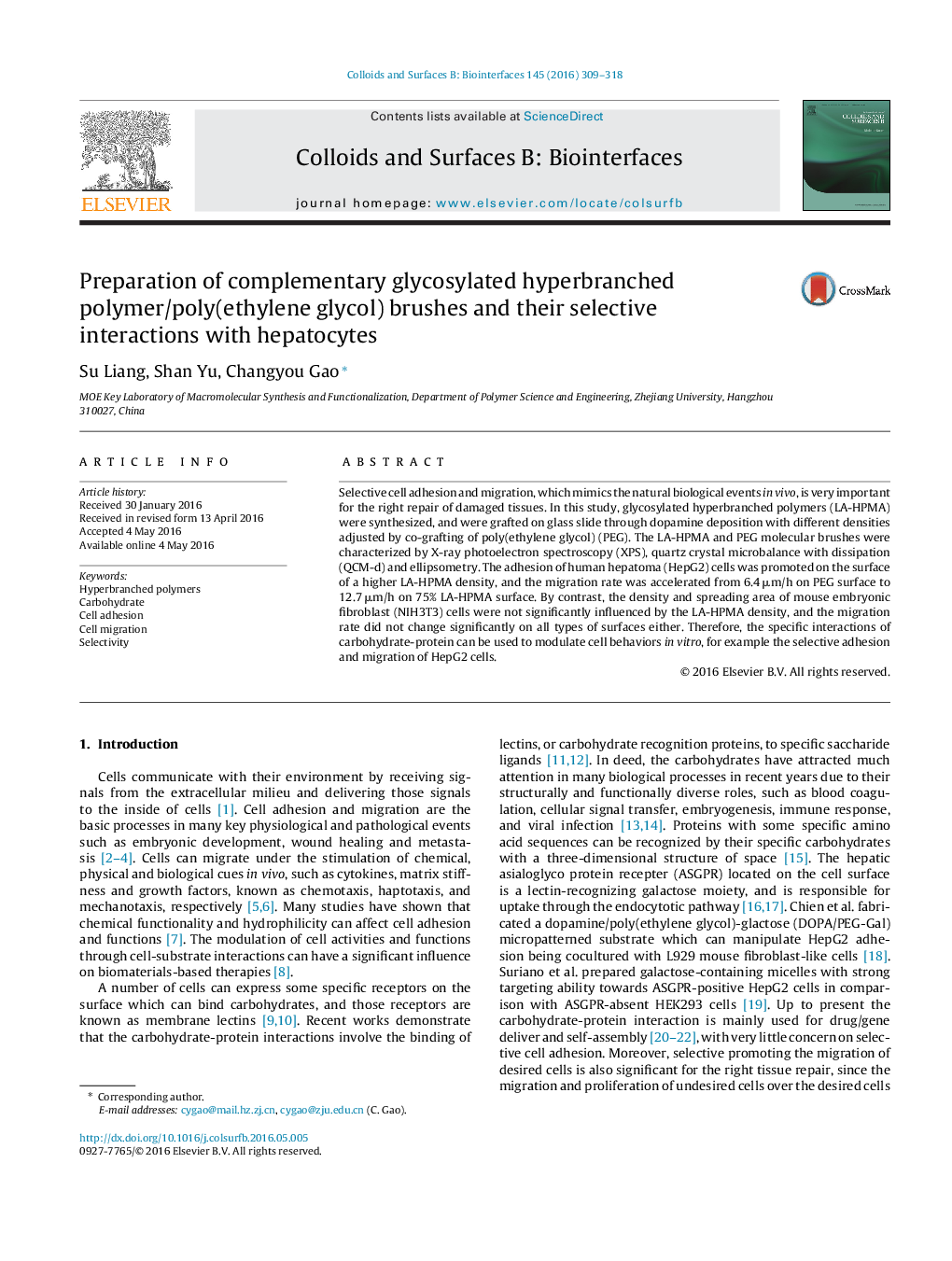| Article ID | Journal | Published Year | Pages | File Type |
|---|---|---|---|---|
| 598953 | Colloids and Surfaces B: Biointerfaces | 2016 | 10 Pages |
•Glycosylated hyperbranched polymers (LA-HPMA) are synthesized.•LA-HPMA/PEG are immobilized onto substrates in a complementary way.•Migration of HepG 2 is enhanced >3 folds, while fibroblasts is not affected.•LA-HPMA/PEG complementary surface achieves selective cell adhesion and migration.
Selective cell adhesion and migration, which mimics the natural biological events in vivo, is very important for the right repair of damaged tissues. In this study, glycosylated hyperbranched polymers (LA-HPMA) were synthesized, and were grafted on glass slide through dopamine deposition with different densities adjusted by co-grafting of poly(ethylene glycol) (PEG). The LA-HPMA and PEG molecular brushes were characterized by X-ray photoelectron spectroscopy (XPS), quartz crystal microbalance with dissipation (QCM-d) and ellipsometry. The adhesion of human hepatoma (HepG2) cells was promoted on the surface of a higher LA-HPMA density, and the migration rate was accelerated from 6.4 μm/h on PEG surface to 12.7 μm/h on 75% LA-HPMA surface. By contrast, the density and spreading area of mouse embryonic fibroblast (NIH3T3) cells were not significantly influenced by the LA-HPMA density, and the migration rate did not change significantly on all types of surfaces either. Therefore, the specific interactions of carbohydrate-protein can be used to modulate cell behaviors in vitro, for example the selective adhesion and migration of HepG2 cells.
Graphical abstractFigure optionsDownload full-size imageDownload as PowerPoint slide
